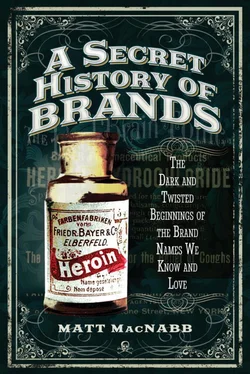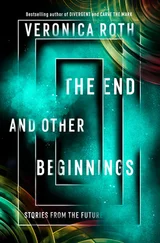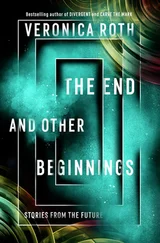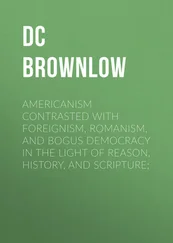…a brilliant investor, more talented than her peers, male or female; with investments in land, fruit, stocks, bonds. She would not have called herself a feminist or an icon. She wanted to be a talented architect, but she believed the results of the earthquake highlighted her shortcomings in that pursuit. She did not believe in inherited wealth, and so she sought to make her money grow. I think she is far more interesting and believable as a three-dimensional historical figure – someone who faced many challenges in life and found very creative and effective ways to deal with them. To me, it is far more intriguing to understand that, for a dozen years or more, she got up everyday and managed a major construction project – not for some fanciful reason about obsession or ghosts, but because it was a creative outlet and she preferred a life of work rather than leisure. She was a busy woman, right up to the end.
When it comes to the question of her supposed obsession with the occult, Mary Jo takes umbrage with the status quo. ‘I found no historical evidence that Sarah Winchester was obsessed. She could have joined a local group that routinely held séances, and she did not. As for the occult, she belonged to an Episcopalian church.’
When they removed Sarah’s remaining personal items from the home, a small box was recovered that consisted of some of her dear husband’s items and a small lock of blonde hair from her baby. We should perhaps focus on remembering Sarah not as an isolated and superstitious eccentric, but as a devoted wife and mother who was tragically stripped of everything she knew and loved. Sarah Winchester was left with a hollow fortune and, instead of bringing her comfort and distraction, it served only to further drive her intense amount of sorrow and grief. Her elaborate and mysterious home was simply her best way of honouring the memory of her loved ones.
The Winchester Mystery House Today
The Winchester mansion boasted one hundred and sixty rooms… or so we thought. During the writing of this book a secret attic room was uncovered by those who run the mansion. The preservation team at the house were able to recover several items from the room, from a Victorian couch, sewing machine, and pump organ, to paintings and a dress form. The room was boarded up after the 1906 earthquake and had not seen the light of day until now. The mansion remains a landmark for both California and San Jose and is even listed in the National Archive of Historic Places.
Chapter Nine
Bakelite: Killer Plastic
Bakelite was one of the more fascinating of the early developments in plastic and, although it was only on the market for a relatively short time, it was utilised during the glamorous era of the Roaring Twenties on many beautiful products, making it very collectible still today. It was ultimately fatal controversy involving the family who invented this amazing product that clings to the memory, and continues to fascinate as one of the more salacious dramas in recent brand history.
A Brief History of Plastics
Plastics are one of the most revolutionary and important inventions to come out of the nineteenth century. Plastics can be tough and rigid, soft and flexible, transparent or opaque. Plastic began to be mass manufactured just over a century ago, which makes it a very modern material. Prior to the inception of plastics, other similar materials such as shell and horn were often used. By 1725, London had become the major European centre for the moulding of horn. By the nineteenth century the common use of ivory and tortoise shell was no longer viable because the natural resources needed to poach the animal materials were being over-farmed and were becoming scarce. There was a great need for an artificial material to take their place, and that is where plastic came into play.
The first plastic was introduced at the Great International Exhibition in London in 1862. This is where British chemist Alexander Parkes introduced the world to his invention, Parkesine. The product resembled the look of ivory and horn and seemed like a great new alternative. The reasons for the failure of the product vary, depending on the source. There are some who say that it wasn’t a viable option thanks to inflated production costs, and others who attest that Parkes used inferior materials, thus producing inferior products that weren’t well received by consumers. Regardless of the reasoning, Parkesine was a commercial failure, but soon another innovation in plastics would emerge to take its place.
Inventor John Wesley Hyatt, Jr. and his older brother Isaiah, both moved to the bustling and busy city of Chicago early in their adult lives. John worked as a printer’s apprentice and began inventing at a young age, while Isaiah was a newspaper editor. The Hyatt brothers filed for their very first patent on 19 February 1861 under Patent 31,461. The invention was an ‘Improved Knife-Sharpener’. The Hyatt brothers seemed to work well together and would continue to do so in the future, leading up to their most important discovery. The two would file another patent the next year, on 17 June 1862, for an ‘improvement in knife or scissors sharpeners’ (Patent 35,652).
In 1863, Phelan & Collender, the largest billiard supply company in the United States, were running a contest, seeking a synthetic replacement material to the ivory billiard balls that had long been the industry standard. The material was beginning to show signs of scarcity, due to the over-farming of elephant tusks. The hefty bounty of $10,000 was offered to anyone who could bring the company a new synthetic. John Wesley Hyatt, Jr. was one of the people that put his hat in the race, and to great success. Hyatt kept working in the print shop to pay the bills, but in his spare time at night he would work feverishly on the new invention.
In 1865 Hyatt was successful in creating a compound that consisted of a wood fibre core covered with a shellac and ivory dust. It is unclear whether he won the contest or was awarded any of the prize money from Phelan & Collender. On 10 October 1865, John Hyatt was granted his first solo patent for ‘Billiard-balls’ that detailed his new method for creation (Patent 50,359). He would soon form the Hyatt Billiard Ball Company with his friend Peter Kinnear. Hyatt needed to keep experimenting and developing new incarnations of his product because, while it was a step in the right direction, it still lacked the density and characteristics of ivory in many ways. It’s a good thing he still needed his day job, because it was one fateful day working in the print shop that Hyatt would discover the lead he needed to change history.
It was a spilled bottle of collodion that sparked Hyatt’s imagination. He went to clean up the spill, no doubt with annoyance that he would have a sticky mess on his hands, since collodion was a syrupy mixture that was used for coating photography in those days. Printers would use the substance, marketed then as ‘new-skin’ to coat their hands for protection while they were working. Instead of a mess he was encountered by a small amount of dried material that seemed to resemble the thickness and consistency of ivory. Collodion was, after all, primarily made of an alcohol and nitrocellulose mixture. Hyatt had exactly what he was looking for; he just needed a way to produce it effectively as a fully developed material. The experimentation began full-time, with Hyatt working with both liquid and solid collodion.
Years later, when Hyatt finally combined collodion with camphor and applied a heat to it, he discovered a mouldable, semi-synthetic thermoplastic. The Hyatt brothers wasted no time in looking after their interests and quickly filed for a patent. Patent 91,341 was granted on 15 June 1869 for an ‘Improved Method Of Making Solid Collodion’. The patent explanation read:
Читать дальше












